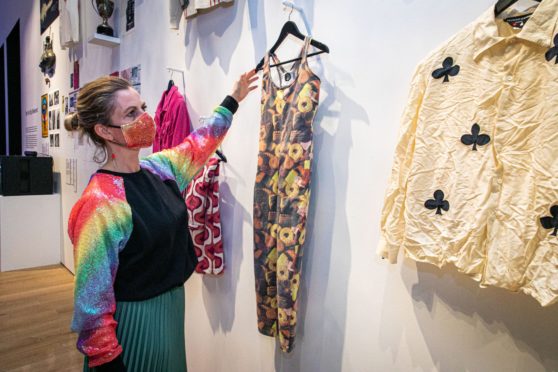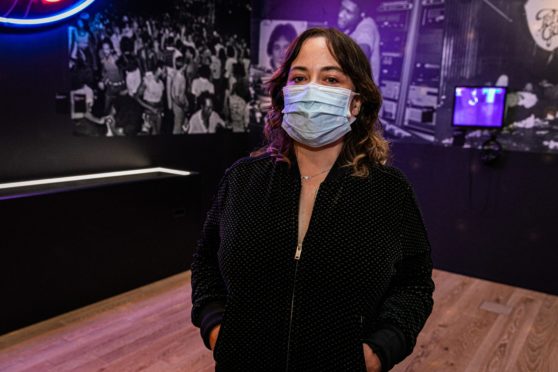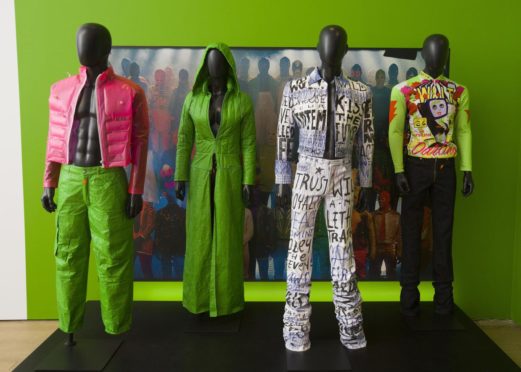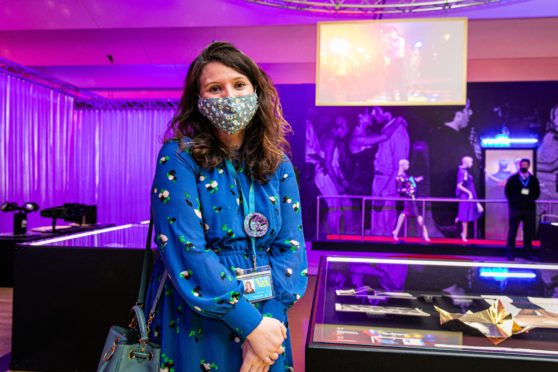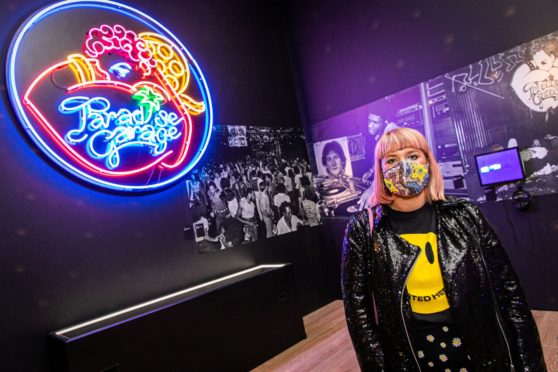The Courier’s Arts & Entertainment team meet some of the people behind Night Fever: Designing Club Culture.
It’s hard not to strut a little bit at the V&A’s new exhibition, Night Fever: Designing Club Culture, which opens to the public tomorrow. It’s been a hard year. We deserve a strut.
It hasn’t been the easiest time to bring something of this scale together, and with Leonie Bell only coming into her role as Director in July 2020, it’s clearly a huge relief that she can see people come back into the building and into a new exhibition.
“I can’t wait to welcome people back into the building,” she tells Lorraine Wilson. “The nature of the exhibition is obviously celebratory, but there’s also a real poignance with so many clubs and music venues still closed.”
This will be the only UK showing of Night Fever, which was developed by the Vitra Design Museum and ADAM – Brussels Design Museum. However, the team in Dundee has curated an additional room celebrating Scottish clubbing.
The nature of the exhibition is obviously celebratory, but there’s also a real poignance with so many clubs and music venues still closed.”
“I had no idea how difficult it would be to lead an organisation that was closed. We had to work that bit harder and of course the technicians from Vitra couldn’t come over so we were checking in online every day.
“And of course the challenges of opening at this time and the safety measures we have to put in place.”
Even knowing what the exhibition would look like, Leonie has been surprised at how well the spaces are designed, with the graphics and lighting bringing the stories to life.
“We start in Italy in the 1960s and it goes on to disco in 1970s New York. When you think of the societal changes that it covers, this is as much a brilliant social history exhibition as much as it’s a design exhibition.”
The Curators
Glasgow School of Art curator Mairi MacKenzie worked on the section of Night Fever which focuses on Scotland’s unique club culture. It includes legendary nights in Dundee, Aberdeen, Edinburgh, Glasgow and Paisley,
Speaking with Jen McLaren, she says, “People in Scotland like to go out – they’re really good at it and they love having a good time. There has been no shortage of amazing night clubs, dance halls and venues so it was really hard to narrow it down.
“I took the dates where I saw the culture shifting (1987–1997) and picked clubs that I thought represented a range of experiences in that period.
A particular feel to Scottish clubs
“Even though a lot of the things that took place in Scottish night life happened all over the UK, there’s something quite particular about the aesthetic and feel of Scottish clubs. There’s a warmth, a humour and a connectedness between the clubs that I really found special.”
Mairi adds, “I have so many memories that have been stirred up by this exhibition – it’s super evocative, it’s taken me back to amazing nights that I’d forgotten about or hadn’t thought about in a long time.
“I was lucky to grow up when I did and come of age when nightclubs were going through a huge transformation at the end of the ’80s through to the late ’90s.”
Jen also spoke with V&A Dundee curator Kirsty Hassard, who believes the exhibition “showcases how important nightclubs are to culture – within Scotland and the UK”.
“I love the first section of the exhibition which looks at Italian radical design and showcases the amazing minds and imagination that was going on and how that … really pushed forward what a nightclub was,” she says.
“Working on the Scottish section of the exhibition has been hugely nostalgic for me – just thinking how long it’s been since I was in a club.”
The designer
Having spoken to Sam Paton from Isolated Heroes before the exhibition, Rebecca Baird now met her mask-to-mask. “I just want to be on a night out now,” Sam says, as lights from a giant mirrorball above rain down the walls.
Sam was dressed from head to toe in sparkly pieces from her Dundee-based fashion house’s new collection, the acid house-inspired Hardcore Happiness, which is the official partner with Night Fever.
For Sam, clubbing provides a “freedom of self-expression”. She reckons the best club experiences come from “finding your tribe – in your best outfits”.
And although she loves going out abroad, Sam maintains that home is where the heart is when it comes to going “out-out”.
“The Reading Rooms was the best place to be,” she says. “I’ve made many a friend there – and worn many an outfit!”
Can V&A Dundee capture different generations with new Night Fever experience?
